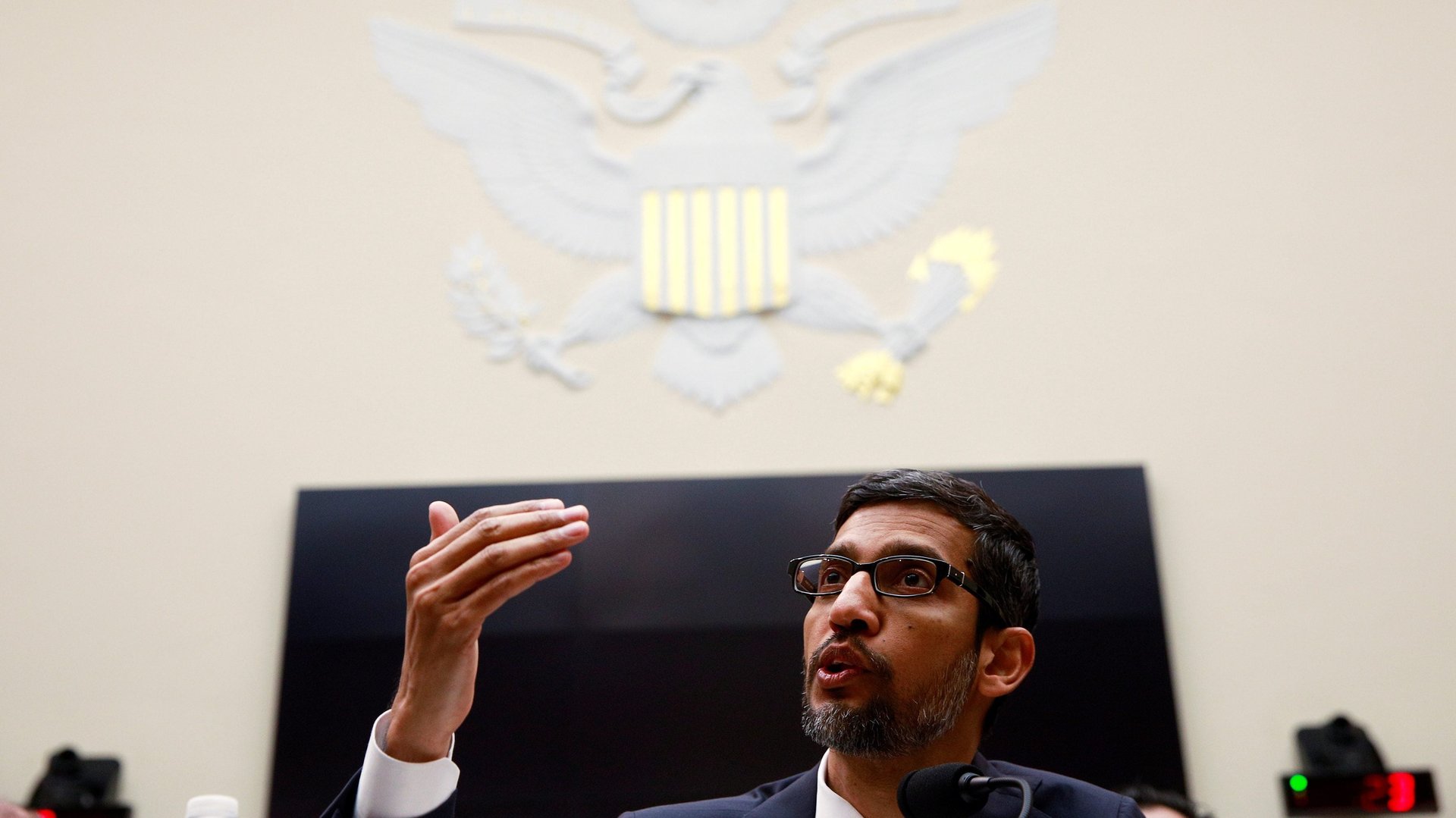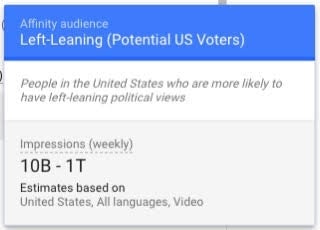Google guesses your political leanings—but won’t tell you
Google’s powerful tracking systems let advertisers target ads to you—or hide them from you—based on Google’s guess of your political leaning. But, unlike many other categorizations it has of you, it won’t tell you what it guesses your politics to be.


Google’s powerful tracking systems let advertisers target ads to you—or hide them from you—based on Google’s guess of your political leaning. But, unlike many other categorizations it has of you, it won’t tell you what it guesses your politics to be.
According to a blog post from Google Nov. 20, the company has categorized many of the Americans who use its services as “left-leaning, right-leaning, and independent.” But, Google doesn’t disclose to users how it has categorized their own individual political leanings.
Google does disclose its guesses about many of your other interests and habits (you can find them here), which it calls “affinity audiences.” These can include things like whether you enjoy pop music or extreme sports, or if you shop at department stores or read business news. For advertisers, Google offers affinity audiences for the “left-leaning”, “right-leaning” and “undecided” categories. It generates those interests based, in part, on “your activity while you were signed in to Google,” whether that’s on Google properties or elsewhere on the web.
Google said that it doesn’t disclose its “granular” categorization of its users—in politics and, it said, as well as in other categories—because the more detailed classification might be too granular to be useful. A Google spokesperson said that just like the company won’t show you whether it thinks you’re left- or right-leaning, the company also doesn’t show potential new car buyers whether it thinks you prioritize gas mileage or appearance and doesn’t show credit card holders if it thinks you have a lot of cards already or value a low interest rate.
Facebook has a similar classification structure—categorizing most US users as very conservative, conservative, moderate, liberal or very liberal—but it has long disclosed its categorization to its users. Other lesser-known companies, including data brokers, have guesses too.

In a description on Google’s advertising platform, it says that it shows more ads to “left-leaning” web users than “right-leaning.” The right-leaning category has between 5 billion and 10 billion impressions per week, compared to the left-leaning’s more than 10 billion. Both far outnumber those shown to “independents,” which are under 1 billion. The categories are only available to certain advertisers, such as those who’ve gone through Google’s political ad verification process, which entails submitting a a government-issued ID for the person buying ads, along with an ID number for the Federal Elections Commission or Internal Revenue Service for the organization the ads are for. Other users of Google’s ad-targeting platform won’t see the political affinity audiences offered.
Google recently announced that it’s banning advertisers whose ads discuss federal or state campaigns, ballot measures, or political parties from using these political categories. So the political category, along with the hidden classification of Google users, is going away by the start of next year, when Google’s changes begin in the US. Those advertisers also won’t be able to directly upload a list of the people they want to reach to Google—instead, they will only be able to target their ads by age, gender and zip code.
Google’s changes were panned by digital strategists across the political spectrum as window-dressing that will harm legitimate campaigns but not stop bad behavior. Because the political classification is going away, it’ll no longer be available to issue advertisers—like Planned Parenthood or climate change groups—who are still allowed wider targeting options than election-related advertisers are.
The company has a separate “topics” category for left-leaning and right-leaning news, but that’s based on the context. For example, a viewer watching right-leaning news would see ads based on the right-wing news—even if Google had the viewer pegged as left-leaning. Advertisers, political or not, will still be able to use that information to target ads.